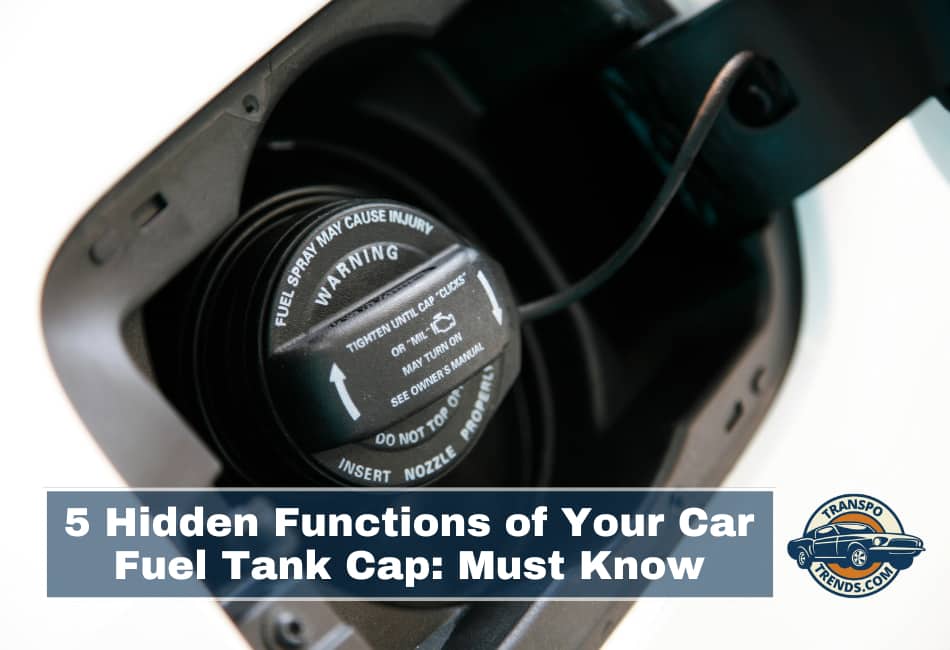Most car owners rarely give their fuel tank cap much thought. It is something we open when refueling and close as we drive off.
But what if I told you that this small, seemingly insignificant component plays a surprisingly important role in your vehicle’s health, safety, and performance?
In this article, we explore five critical functions of the fuel tank cap and offer step-by-step instructions for common troubleshooting.
1. Emergency Manual Release
There may come a time when you press the fuel door release button and nothing happens. Panic sets in. But before you start thinking of visiting a mechanic, here is a hidden trick.
Open your trunk and locate the small access panel on the interior side, usually to the right. Behind this panel, you will find a thin black manual release cord.
Pulling this cord will disengage the fuel tank lock and allow the fuel door to open. It is a clever backup mechanism that can save you from an inconvenient or expensive repair trip.
2. Preventing Paint Corrosion
One of the most overlooked mistakes drivers make is allowing the fuel tank cap to dangle freely while refueling.
This can cause the cap to knock against the body of the car, eventually chipping the paint and exposing the metal beneath to moisture. Over time, rust can take hold.
Fortunately, most cars are designed with a small peg or slot on the fuel door where you can secure the cap while refueling.
If your vehicle has this feature, always take a second to push the cap into place. It is a small habit that prevents long-term paint damage.
3. Fault Light? Check the Cap First
You are driving peacefully when suddenly a yellow warning light shows up on your dashboard. Before you assume it is an engine problem, check the fuel tank cap.
A loose or improperly tightened cap can disrupt the fuel system pressure, triggering a fault light. Unscrew the cap and tighten it until you hear a click.
Drive for a few miles, and the light will likely disappear. If it does not, then it may be time to seek professional help.
This tip alone has saved thousands of drivers an unnecessary trip to the repair shop.
4. Drain Maintenance
When was the last time you cleaned around your fuel filler neck? Most people never do.
Look beneath the cap area and you will find a small drainage channel. This drain is designed to divert water away from the fuel system.
Over time, leaves, dust, or grime can block it. If this drain clogs, water can seep into the fuel tank, especially during heavy rains or car washes.
Use a small flexible brush or air duster to keep this drain clear. It is a minor maintenance task with major consequences if ignored.
5. Fuel Type and Tire Pressure Labels
Many drivers pull up to the pump and hesitate—was it regular, premium, or diesel? To avoid confusion, manufacturers place a label near or on the fuel tank cap indicating the recommended fuel type. This eliminates guesswork.
Also, did you know your fuel door often contains the standard tire pressure values? Next time you need to inflate your tires, open the fuel tank cap and check the inside of the door.
You will likely find values for both front and rear tires, often listed in psi (pounds per square inch) or bar.
This built-in guide helps prevent overinflation or underinflation, both of which can affect handling, fuel economy, and safety.
Summary Table
| Function | Description | Why It Matters |
|---|---|---|
| Manual Release | Pull cord behind trunk panel to open stuck cap | Avoids roadside emergencies or forced repairs |
| Paint Protection | Use designated holder to prevent cap from scratching car | Prevents rust and preserves car bodywork |
| Fault Light Fix | A loose cap can trigger dashboard warning | Saves unnecessary diagnostics or mechanic trips |
| Drain Maintenance | Keep the filler neck drain clean | Prevents water contamination of the fuel system |
| Label Reference | Shows correct fuel type and tire pressures | Ensures safe fueling and proper tire inflation |
Understanding the full functionality of your fuel tank cap gives you a small but meaningful edge as a car owner.
It reinforces the idea that every component of your vehicle, no matter how minor it may seem, serves a purpose worth knowing.

